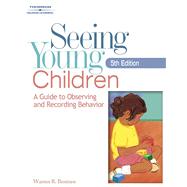
What is included with this book?
| Preface | xi | ||||
|
1 | (92) | |||
|
3 | (17) | |||
|
3 | (7) | |||
|
10 | (3) | |||
|
13 | (7) | |||
|
20 | (35) | |||
|
21 | (6) | |||
|
27 | (3) | |||
|
30 | (6) | |||
|
36 | (7) | |||
|
43 | (12) | |||
|
55 | (38) | |||
|
55 | (23) | |||
|
78 | (4) | |||
|
82 | (3) | |||
|
85 | (8) | |||
|
93 | (124) | |||
|
94 | (1) | |||
|
95 | (9) | |||
|
95 | (9) | |||
|
104 | (8) | |||
|
104 | (8) | |||
|
112 | (7) | |||
|
112 | (7) | |||
|
119 | (18) | |||
|
119 | (18) | |||
|
137 | (6) | |||
|
137 | (6) | |||
|
143 | (6) | |||
|
143 | (2) | |||
|
145 | (4) | |||
|
149 | (6) | |||
|
149 | (6) | |||
|
155 | (6) | |||
|
155 | (6) | |||
|
161 | (25) | |||
|
161 | (11) | |||
|
172 | (7) | |||
|
179 | (7) | |||
|
186 | (6) | |||
|
192 | (25) | |||
|
192 | (3) | |||
|
195 | (12) | |||
|
207 | (10) | |||
|
217 | (136) | |||
|
217 | (2) | |||
|
219 | (23) | |||
|
219 | (2) | |||
|
221 | (3) | |||
|
224 | (3) | |||
|
227 | (3) | |||
|
230 | (3) | |||
|
233 | (9) | |||
|
242 | (54) | |||
|
242 | (9) | |||
|
251 | (12) | |||
|
263 | (8) | |||
|
271 | (9) | |||
|
280 | (16) | |||
|
296 | (57) | |||
|
296 | (1) | |||
|
297 | (2) | |||
|
299 | (9) | |||
|
308 | (6) | |||
|
314 | (1) | |||
|
314 | (7) | |||
|
321 | (9) | |||
|
330 | (6) | |||
|
336 | (17) | |||
|
353 | (76) | |||
|
354 | (3) | |||
|
357 | (42) | |||
|
357 | (3) | |||
|
360 | (5) | |||
|
365 | (6) | |||
|
371 | (6) | |||
|
377 | (1) | |||
|
378 | (3) | |||
|
381 | (2) | |||
|
383 | (16) | |||
|
399 | (30) | |||
|
399 | (4) | |||
|
403 | (4) | |||
|
407 | (3) | |||
|
410 | (3) | |||
|
413 | (2) | |||
|
415 | (1) | |||
|
416 | (1) | |||
|
417 | (2) | |||
|
419 | (10) | |||
| Appendix 1 Developmental Checklists | 429 | (6) | |||
| Appendix 2 Social-Emotional Checklist | 435 | (2) | |||
| Appendix 3 Areas for Notice in Observing an Individual Child | 437 | (2) | |||
| Appendix 4 Emotional Dependency Behavior: Time Sample Procedure | 439 | (2) | |||
| Appendix 5 Observation Record (Social Skills) | 441 | (1) | |||
| Appendix 6 Observational Records | 442 | (2) | |||
| Appendix 7 Summary of Piaget's First Two Stages of Cognitive Development | 444 | (1) | |||
| Appendix 8 Havighurst's Developmental Tasks--Infancy through Middle-Childhood | 445 | (2) | |||
| Glossary | 447 | (12) | |||
| References | 459 | (7) | |||
| Annotated Bibliography | 466 | (3) | |||
| Index | 469 |
The New copy of this book will include any supplemental materials advertised. Please check the title of the book to determine if it should include any access cards, study guides, lab manuals, CDs, etc.
The Used, Rental and eBook copies of this book are not guaranteed to include any supplemental materials. Typically, only the book itself is included. This is true even if the title states it includes any access cards, study guides, lab manuals, CDs, etc.